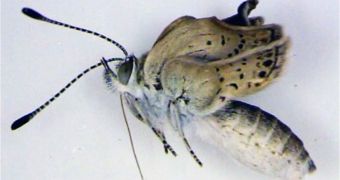Japanese scientists recently made a rather unsettling discovery: in the aftermath of the Fukushima nuclear disaster, a domestic butterfly species underwent significant transformations, meaning that several mutant specimens stepped out of the radiations haze and came to greet the public.
Seeing how insect species – butterflies in particular – are the first to respond to the drastic changes in their environmental conditions brought about by major incidents such as nuclear spills, concerns are now raised with respect to how other animals and eventually humans will respond to the level of radiation they found themselves exposed to.
“Our demonstration of heritable germ-line genetic damage caused by low-dose exposure due to radioactive contamination in a species of butterfly has invaluable implications for the possible future effects of radiation on animals,” argue the scientists who looked into this issue.
Interestingly enough, it seems that the visible abnormalities displayed by said butterflies as a result of exposure to radiation became ever more severe as one generation followed another.

 14 DAY TRIAL //
14 DAY TRIAL //